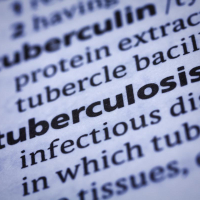
Plain language summary
Linezolid for managing people with drug‐resistant tuberculosis
What is drug‐resistant tuberculosis, and how might linezolid work?
Tuberculosis is caused by infection with Mycobacterium tuberculosis bacteria. When there are symptoms or signs of illness, this is called active tuberculosis. An estimated one‐third of the world's population are infected with tuberculosis, and around 1.4 million people died from active tuberculosis in 2015.
Bacteria that cause tuberculosis can develop resistance to the drugs most commonly used to treat tuberculosis, also called first‐line antibiotics. This is an increasing problem that makes treatment more difficult, because second‐line tuberculosis treatment drugs are less powerful against the bacteria, and more likely to cause harmful effects. Standard treatment for drug‐resistant tuberculosis requires patients to take multiple antibiotics for nearly two years. Linezolid is a second‐line drug that laboratory studies have found to be good at killing bacteria that cause tuberculosis, but that can also cause frequent, serious harmful effects.
The review question
Recent international guidelines recommend trying to include linezolid in the treatment of all patients with multi‐drug resistant tuberculosis, but there is concern about whether enough good evidence exists to tell us how well it works, what dose is best, and how safe it is for people who take it.
Study characteristics
We searched for evidence up to 13 July 2018. We analysed data from two trials, one of which randomly allocated 65 people with drug‐resistant tuberculosis to either a linezolid‐containing or linezolid‐free drug combination, and another that randomly allocated 39 participants to receive linezolid as part of their treatment from the start or have it added after a delay of two months. We also included 14 studies, including 1678 people, in which some participants received linezolid but others did not, but this was not determined at random.
What are the main results of the review?
One trial showed a higher likelihood of cure and lower risk of treatment failure in participants receiving linezolid compared to those who did not. The second trial showed that participants who received linezolid immediately had a higher chance of tuberculosis being cleared from their sputum four months after the start of the study than those who added linezolid after a two‐month delay.
When they examined safety, the first trial found a higher risk of developing low red blood cell counts, nausea and vomiting, and nerve damage in people receiving linezolid. From 11 of the non‐randomized studies that reported this, 22.6% of people had to stop linezolid due to adverse effects (side effects), though further comparisons of harmful effects were not possible due to incomplete reporting in the non‐randomized studies.
Overall, although there is some evidence of benefit, we have very low certainty in its accuracy. More high‐quality studies are required before we can be certain how effective and safe linezolid is for drug‐resistant tuberculosis.
How up‐to‐date is this review?
This review is current up to 13 July 2018.
The CIDG editorial base is located at the Liverpool School of Tropical Medicine in Liverpool, UK. The CIDG is led by Professor Paul Garner (Co-ordinating Editor) and Deirdre Walshe (Managing Editor). Over 600 authors from some 52 countries contribute to the preparation of the Cochrane Reviews. They are supported by an international team of Editors, each with topic or methodological expertise.
The CIDG’s main areas of work are on determination of the effects of interventions on the prevention or treatment infectious diseases of relevance to the United Nations Sustainable Development Goals, particularly malaria, tuberculosis, HIV/AIDS, and neglected tropical diseases. The aims of the CIDG are to impact on policy and research in tropical diseases through the production of high quality and relevant systematic reviews, and to lead developments in review quality improvement and effective dissemination of findings.
